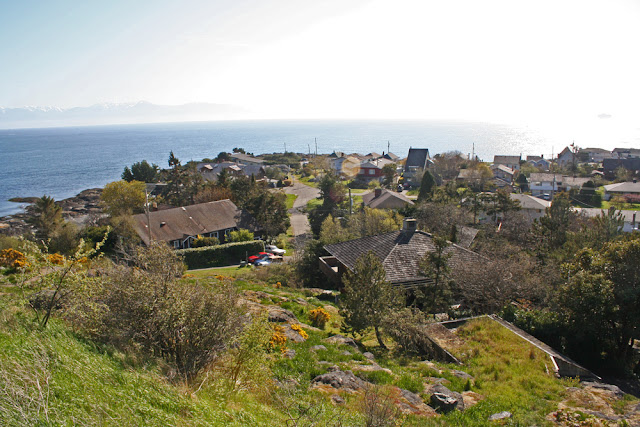I learned in class that there needs to be cations exchanging the colloids to have good, happy dirt, which in turn increases the chance of successful plant growth. When there is a good CEC, brought on by flocculation, the soil will be healthy and fertile. I find it interesting just how long it takes for soil to settle, making it a pretty precious resource to us if it takes that long to develop.
Physical weathering uses the joints to split the rock into smaller pieces. When this happens, it speeds up the process of chemical weathering by increasing the surface area every time the rock splits.
At first I thought this rock could have been victim to salt weathering via crystallization. This occurs because of the water percolating through the cracks and forming crystals. However, this area of France receives a moderate amount of annual rainfall, thereby increasing the chance of washing the salt away.
Pictures Provided From:
Sources Cited:



Your geographic account of the French countryside is factual and knowledgeable. I found your explanation of the weathering process in Beziers to be specific. It appears that the city's rich soil contributes to the beauty of the countryside. According to your photos, the land looks extremely lush and I would be curious to know how much rainfall it receives annually. As a French major, this region has piqued my interest for when I study abroad.
ReplyDeleteSoil truly is a fascinating substance that we are so lucky to have on earth. I can not imagine how long it would take for minerals, organic matter, water, and air to come together and form soil. I wonder if people sought after land for its good soil and decided to settle down there? Perhaps one of the reasons why we have fought so many wars in the past is simply for land and soil.
ReplyDeleteWith so much rainfall in this specific area of France, there would be an abundant amount of plants. So I would think that the pressure of the roots from the plants may increase the fractures on the rocks and therefore increase the weathering of the rock too.
This blog has strong to its point. The hole blog is stated as fact witch makes everything seam very accurate, however opening with i learned in class seams to lower the level of sophistication.
ReplyDelete